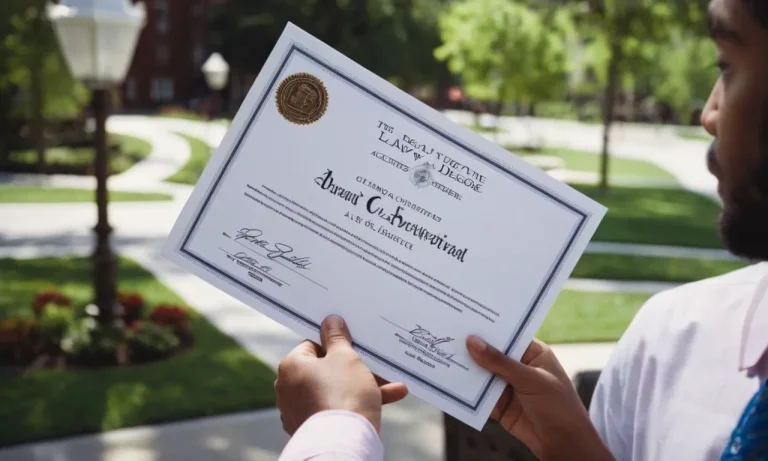Mastering the 800-meter run is a true test of endurance, speed, and mental toughness for high school athletes. This grueling middle-distance event demands a delicate balance of aerobic and anaerobic fitness, making it one of the most challenging races on the track.
If you’re short on time, here’s a quick answer to your question: A good 800-meter time for high school runners typically falls between 1:55 and 2:10 for boys, and 2:15 to 2:30 for girls. However, these times can vary based on factors such as age, experience, and level of competition.
In this comprehensive guide, we’ll dive deep into the world of 800-meter running, exploring the key factors that contribute to a strong performance, the training strategies employed by top athletes, and the benchmarks for success at various levels of competition.
Whether you’re a seasoned runner or just starting out, this article will provide valuable insights to help you achieve your goals in this demanding event.
Understanding the 800-Meter Event
The 800-meter run is a unique and challenging event that demands a combination of speed, endurance, and tactical prowess. It’s often referred to as the “middle-distance” race, bridging the gap between sprinting and long-distance running.
To excel in this event, high school runners must understand the specific demands and develop a well-rounded training regimen.
The Unique Challenges of the 800-Meter Run
The 800-meter race is a true test of an athlete’s versatility. It requires a delicate balance between aerobic and anaerobic fitness, as well as the ability to maintain a high level of speed over an extended period.
Unlike sprinting events, where the focus is on pure explosive power, the 800-meter requires runners to pace themselves while pushing their bodies to the limit. This unique challenge often leads to what is known as the “800-meter burn” – a feeling of intense fatigue and lactic acid buildup in the muscles during the final stages of the race.
Mastering this event requires mental toughness and strategic pacing.
Physiological Demands: Aerobic and Anaerobic Fitness
The 800-meter run demands a delicate balance of aerobic and anaerobic fitness. Aerobic fitness, which refers to the body’s ability to utilize oxygen efficiently, is crucial for sustaining the high level of effort required throughout the race.
According to Runner’s World, the 800-meter event relies on approximately 70% aerobic and 30% anaerobic energy systems. However, the anaerobic component, which involves the body’s ability to produce energy without oxygen, plays a crucial role in the final sprint to the finish line.
To achieve optimal performance, high school runners must incorporate a well-rounded training program that addresses both aerobic and anaerobic development. This may include interval training, tempo runs, and strength training exercises to build power and endurance.
A study by the National Center for Biotechnology Information found that a combination of aerobic and anaerobic training can significantly improve 800-meter performance in adolescent athletes.
Pacing Strategies for Optimal Performance
Pacing is a critical aspect of the 800-meter race, and runners must develop a strategy that suits their individual strengths and race conditions. Some common pacing strategies include:
- Positive Splitting: Starting at a slightly slower pace and gradually increasing speed throughout the race.
- Negative Splitting: Starting at a faster pace and holding on as best as possible towards the end.
- Even Pacing: Maintaining a consistent pace throughout the race.
The optimal pacing strategy may vary depending on factors such as the runner’s fitness level, race tactics, and the competition level. It’s essential for high school runners to experiment with different pacing strategies during training and develop a keen sense of their body’s responses.
Coaches and experienced runners often recommend practicing race simulations and analyzing splits to fine-tune pacing strategies.
Remember, the 800-meter event is a true test of mental and physical fortitude. By understanding the unique challenges, developing a well-rounded training program, and mastering pacing strategies, high school runners can unlock their full potential and achieve great 800-meter times. 😎💪
Factors Influencing 800-Meter Times
Running the 800-meter race is a true test of endurance, speed, and strategy. The ability to maintain a blistering pace for nearly half a mile requires a unique blend of physical and mental prowess. Several key factors play a pivotal role in determining an athlete’s performance in this grueling event.
Age and Experience Level
As runners progress through their high school careers, their times in the 800-meter event tend to improve. This can be attributed to the natural physical development that occurs during adolescence, coupled with the accumulation of training and racing experience.
According to data from Athletic Scholarships, the average 800-meter time for a freshman boy is around 2:20, while seniors often clock in under 2:00. Similarly, freshman girls typically run between 2:40 and 3:00, while top senior girls can dip below 2:20.
Gender Differences in Performance
It’s no secret that there are inherent physiological differences between males and females that contribute to varying levels of performance in track and field events. In the 800-meter race, these differences become particularly apparent.
On average, high school boys tend to run significantly faster times than their female counterparts. According to data from Track and Field News, the national high school record for boys in the 800m is an astonishing 1:46.45, set by Michael Saruni in 2015.
In contrast, the girls’ national record stands at 2:00.07, set by Ajee’ Wilson in 2010.
Training Methodology and Coaching
The training regimen and coaching guidance an athlete receives can have a profound impact on their 800-meter performance. A well-designed training program that incorporates a balanced mix of endurance work, speed training, and race-specific workouts is essential for success.
Coaches who understand the unique demands of the 800-meter event and can tailor their approach to the individual athlete’s strengths and weaknesses can make a significant difference. According to an article on Runner’s World, incorporating hill repeats, tempo runs, and race-pace intervals are key components of an effective 800-meter training plan.
😊
While these factors play a crucial role in determining an athlete’s 800-meter time, it’s important to remember that every runner is unique. With dedication, hard work, and the right guidance, athletes can push their limits and achieve remarkable results in this thrilling event. 🎉
Benchmarks for Success: Good 800-Meter Times
The 800-meter race is a true test of speed, endurance, and mental toughness for high school runners. It’s a distance that requires a delicate balance of explosive power and sustained effort, making it one of the most challenging and exciting events on the track.
As runners strive to achieve their personal best times, it’s essential to have a benchmark to gauge their progress and set realistic goals. This section will provide a comprehensive guide to good 800-meter times for high school boys and girls, as well as insights into elite and professional level performances.
High School Boys’ 800-Meter Times
According to Athletic.net, a reliable source for high school track and field statistics, the national high school record for boys in the 800-meter event stands at an impressive 1:46.45, set by Michael Saruni in 2015.
However, for most high school runners, a more attainable goal would be to aim for the following times:
- State-level competition: 1:52 to 1:56
- Regional-level competition: 1:56 to 2:00
- Local-level competition: 2:00 to 2:05
High School Girls’ 800-Meter Times
On the girls’ side, the national high school record for the 800-meter event is held by Sammy Watson, who clocked an astonishing 2:00.09 in 2019. While this time is remarkable, most high school girls should aim for the following benchmarks:
- State-level competition: 2:10 to 2:14
- Regional-level competition: 2:14 to 2:18
- Local-level competition: 2:18 to 2:22
Elite and Professional Level Times
For those aspiring to reach the highest levels of competition, the 800-meter event becomes even more demanding. Here’s a glimpse at the elite and professional level times:
| Category | Men’s Time | Women’s Time |
|---|---|---|
| World Record | 1:40.91 (David Rudisha) | 1:53.28 (Jarmila Kratochvílová) |
| Olympic Gold Medal | 1:41.73 (David Rudisha) | 1:56.46 (Caster Semenya) |
| NCAA Record | 1:43.55 (Michael Saruni) | 1:57.68 (Pamela Jelimo) |
Remember, these times are just guidelines, and every runner’s journey is unique. With dedication, proper training, and a positive mindset, you can achieve your goals and push your limits in the 800-meter event. Stay focused, stay motivated, and enjoy the thrill of the race! 😎🏃♂️🏃♀️
Training for the 800-Meter Run
Developing Aerobic and Anaerobic Capacity
The 800-meter run is a unique event that requires a delicate balance between aerobic and anaerobic capacity. To excel in this middle-distance race, runners must develop both systems through a well-structured training program.
According to Runner’s World, the aerobic system provides the foundation for endurance, while the anaerobic system allows for bursts of speed and power.
A key component of aerobic training is long-distance running, which helps build cardiovascular endurance and improves the body’s ability to utilize oxygen efficiently. Runners may incorporate tempo runs, fartleks, and hill workouts into their routine to challenge their aerobic system.
On the other hand, anaerobic training focuses on developing the body’s ability to work without oxygen for short periods, which is crucial during the final kick of an 800-meter race. Plyometric exercises, sprints, and high-intensity interval training (HIIT) are excellent ways to enhance anaerobic capacity.
Interval Training and Speed Work
Interval training and speed work are essential components of an 800-meter training program. These workouts not only improve speed and power but also help runners develop the specific physiological adaptations required for middle-distance events.
According to Science for Sport, interval training can enhance VO2 max (maximum oxygen uptake), lactate threshold, and running economy – all critical factors for 800-meter success.
A typical interval workout for 800-meter runners might include repetitions of 200-400 meters at race pace or slightly faster, with recovery periods in between. The recovery periods allow runners to replenish their energy stores and prepare for the next high-intensity effort.
Gradually increasing the volume and intensity of these workouts over time can lead to significant improvements in race performance. 😎
Strength and Conditioning for Middle-Distance Runners
While many runners focus solely on running, incorporating strength and conditioning exercises into their training routine can provide a significant advantage. According to Athletics Weekly, strength training can improve running economy, reduce injury risk, and enhance overall power and explosiveness.
For 800-meter runners, a well-rounded strength and conditioning program might include exercises targeting the core, lower body, and upper body. Core exercises like planks and Russian twists can improve stability and power transfer, while lower body exercises like squats, lunges, and deadlifts can enhance stride length and force production.
Upper body exercises like push-ups and pull-ups can help maintain proper running form and prevent muscular imbalances.
By combining aerobic and anaerobic training, interval workouts, and strength and conditioning exercises, high school runners can develop the necessary physical attributes to achieve impressive 800-meter times.
With dedication, consistency, and a well-structured training plan, these young athletes can reach new heights in their middle-distance running careers. 🏃♂️💨
Conclusion
The 800-meter run is a true test of an athlete’s physical and mental fortitude, demanding a unique combination of speed, endurance, and strategic pacing. By understanding the factors that influence performance and implementing effective training strategies, high school runners can strive to achieve their personal best times in this challenging event.
Whether your goal is to break the 2-minute barrier, qualify for state championships, or simply improve your overall fitness, this comprehensive guide has provided valuable insights and benchmarks to help you navigate the world of 800-meter running.
Remember, success in this event requires dedication, perseverance, and a willingness to push beyond your limits. With the right mindset and training approach, you can unlock your full potential and achieve remarkable results on the track.






